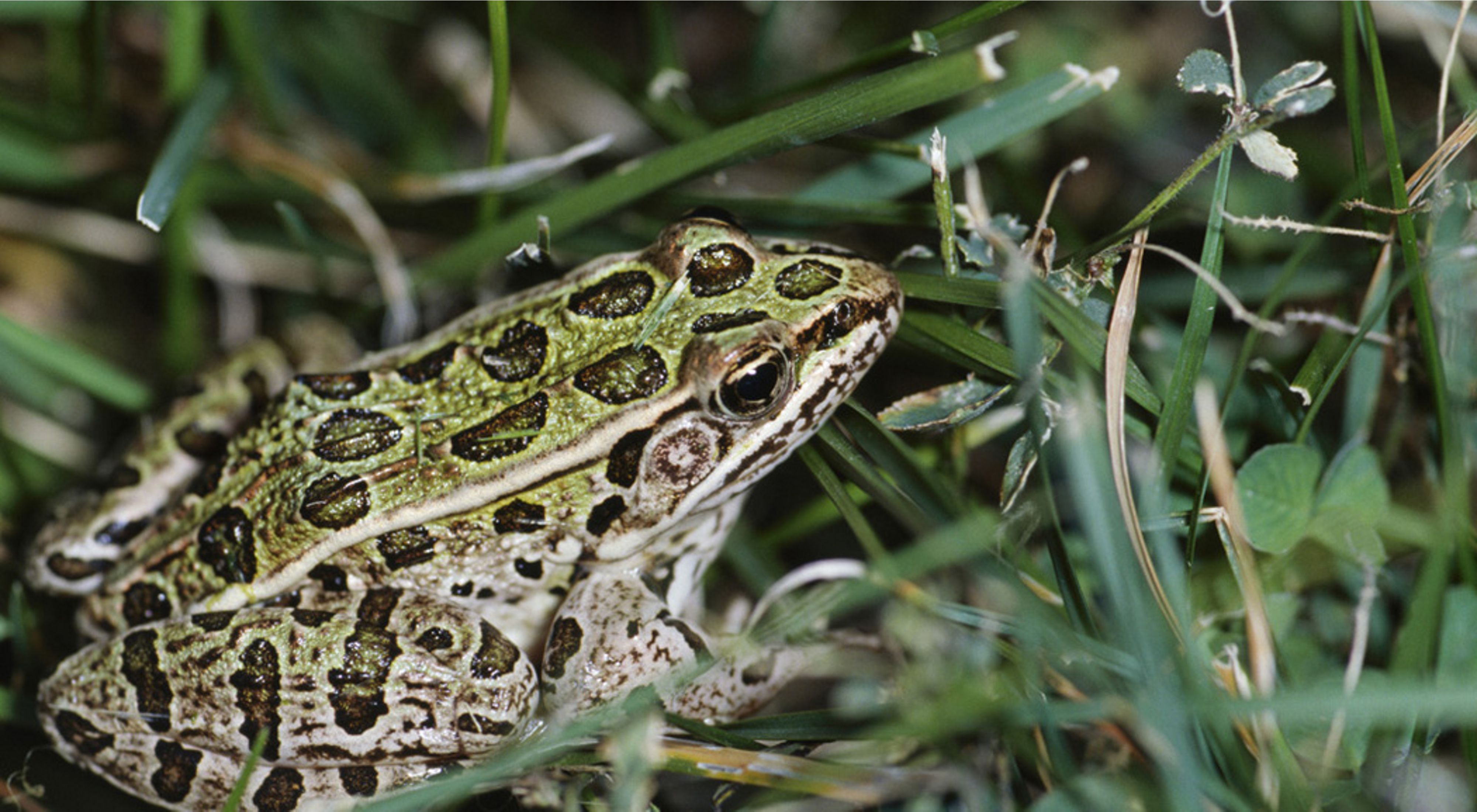The Northern Leopard Frog Returns
TNC scientists re-establish a species on the brink.
In the cool hours of early morning, nature hosts a symphony at the TNC’s Santa Fe Canyon Preserve. Especially loud are croaks and calls emanating from northern leopard frogs at the preserve’s restored wetland areas. Small enough to fit in the palm of your hand, this frog makes big noise. For TNC scientists, it’s music to their ears—a triumphant sign that the frog is making a comeback.
The Nature Conservancy in New Mexico has been working since 2012 to re-establish the northern leopard frog (Lithobates pipiens). This threatened native species thrives in places with permanent and well-oxygenated water that is rich with plant and animal life. Such places have been in steady decline over the last few decades, especially in New Mexico, and coupled with the spread of the deadly chytrid fungus and non-native bullfrogs, the frog’s population in the state has become alarmingly low.

NORTHERN LEOPARD FROG QUICK FACTS
- Brown to green with three rows of irregularly arranged black spots on the its back (hence, its name)
- Emits a loud, guttural call that sounds like fingers being rubbed across an inflated balloon
- Typically breeds April to June, with females laying 1000 to 6000 eggs
- Male may be distinguished by enlarged thumb pads
- Takes about two months for tadpoles to develop into frogs and one to two years to fully mature
- Tends to spend more time in meadows, foraging for food during dryer months
TOUGH TADPOLES
A team of scientists from TNC has been taking action to keep the frog alive and well in New Mexico. Since the work began, they have released over 1000 tadpoles and a small group of adult northern leopard frogs into ponds on the Santa Fe Canyon Preserve in hopes of re-establishing their population.
Last year, TNC released 400 tadpoles that were collected from a nearby thriving northern leopard frog population and then reared in an Albuquerque facility. Previously released adult frogs came from the middle Rio Grande. Bringing together populations from distinct areas in New Mexico ensures variety in genetics, making the population in Santa Fe Canyon stronger and more resilient.
As is common in nature, the majority of the tadpoles haven’t survived. But enough have persevered that for the first time in a long time, the northern leopard frog is thriving in Santa Fe Canyon once again.
SOUNDS OF SUCCESS
“We first heard calling males in April of this year, and I found newly hatched tadpoles in May,” says TNC ecologist Robert Martin. “This is the first breeding event on our preserve and a really positive sign that the population just might survive. It’s really exciting to see another native species return to the Santa Fe Canyon Preserve and resume its important role in the ecosystem.”
TNC scientists and their project partners are also working to save this species by restoring and managing water conditions that the frogs depend on for reproduction and survival. These scientists are studying breeding habits, raising tadpoles in tanks to give them a “head start” before releasing them into the wild to create new populations.
“In the Santa Fe Canyon Preserve, we’re hoping to develop a strong population,” says Martin. “The preserve could be used as a stronghold if the northern leopard frog numbers continue to decline and the species becomes listed as endangered or threatened.”
JOINING FORCES, MAKING A DIFFERENCE
TNC scientists are able to protect the northern leopard frog thanks to a generous grant from the PNM Resources Foundation and the collaboration of other partners. Working together, they have been able to fund the northern leopard frog reintroduction program and also construct trails so that the public has better access to the Santa Fe Canyon Preserve.
